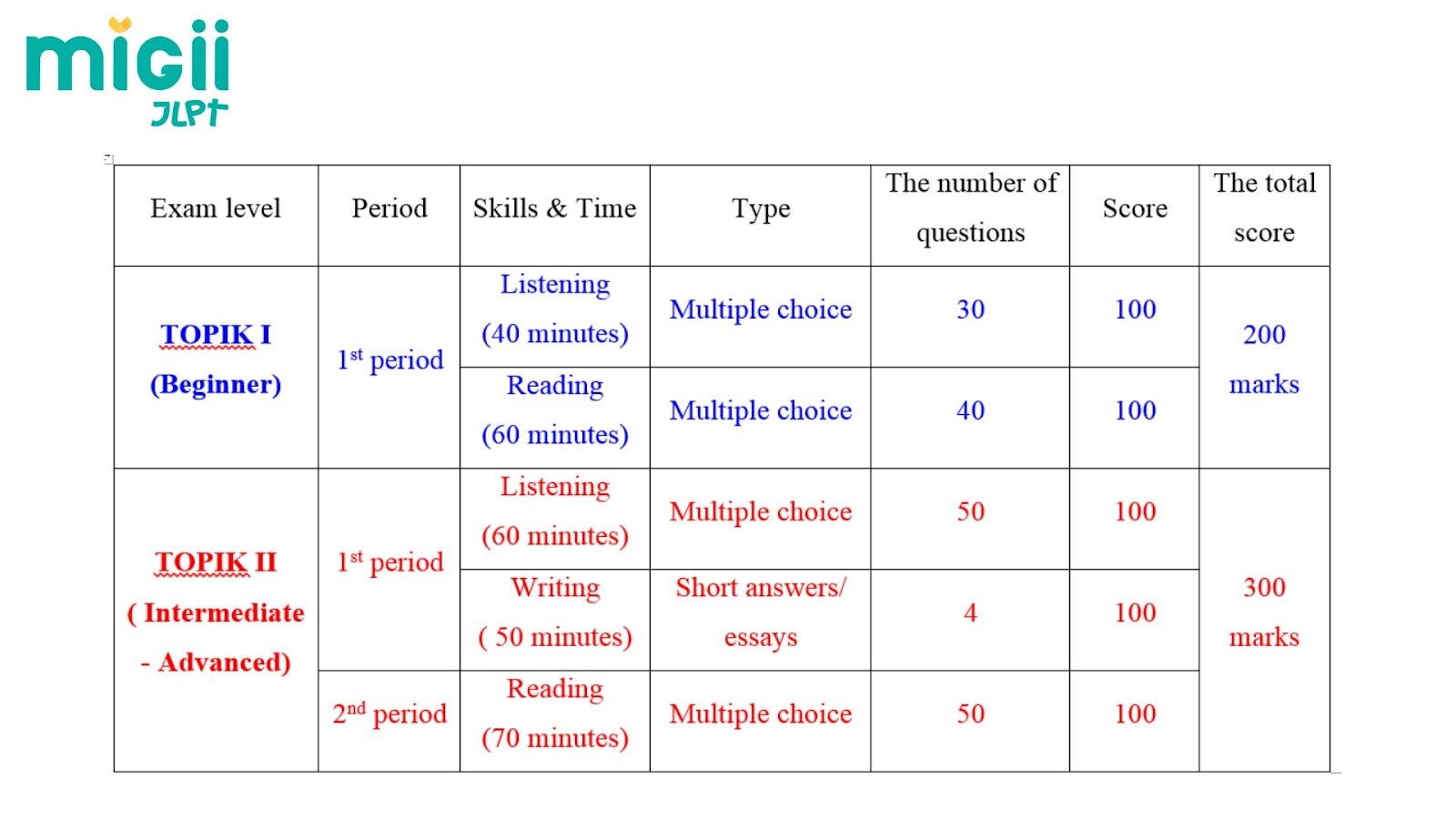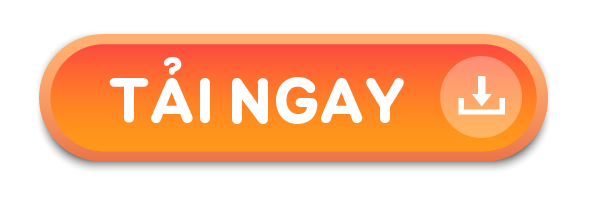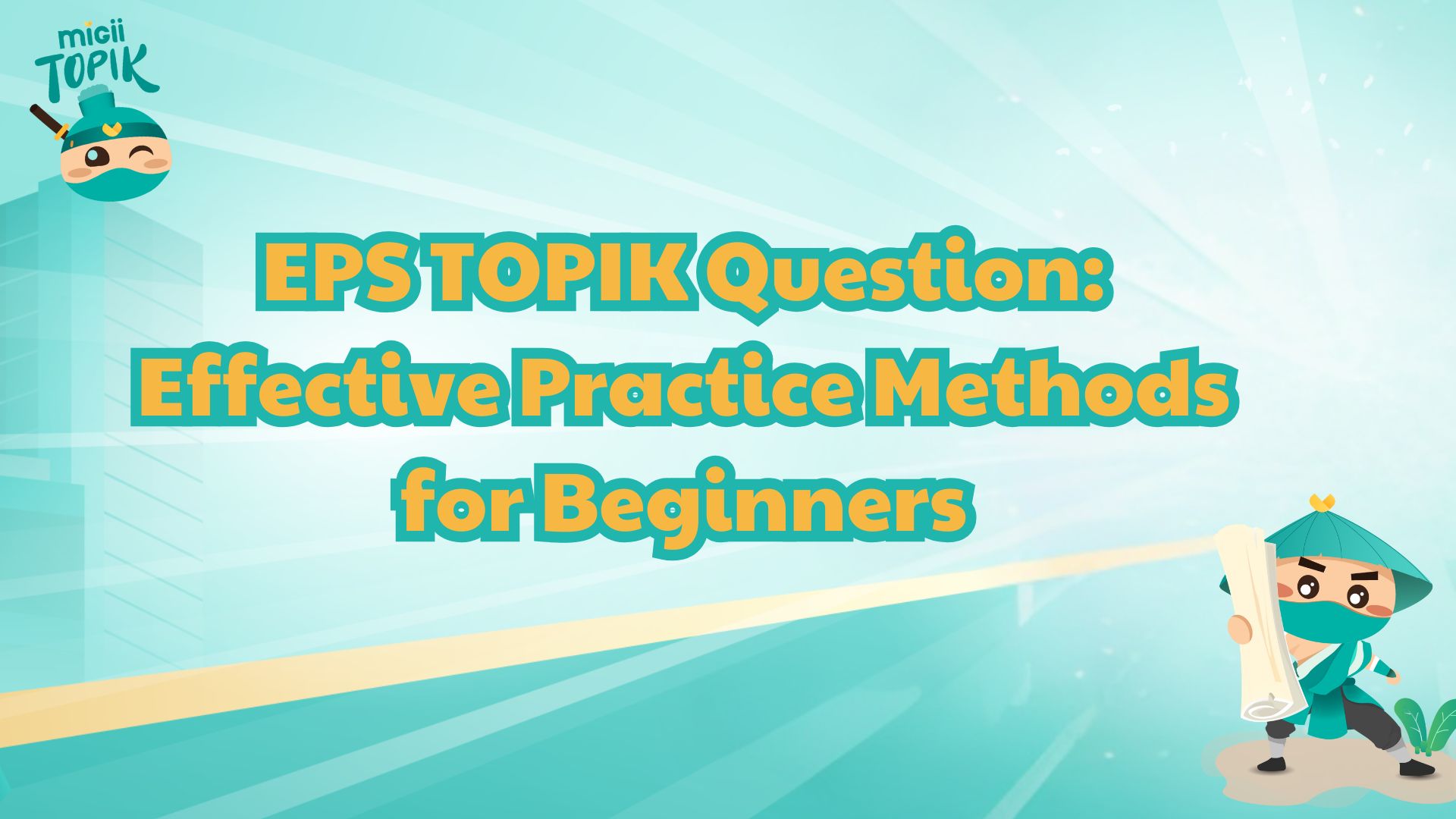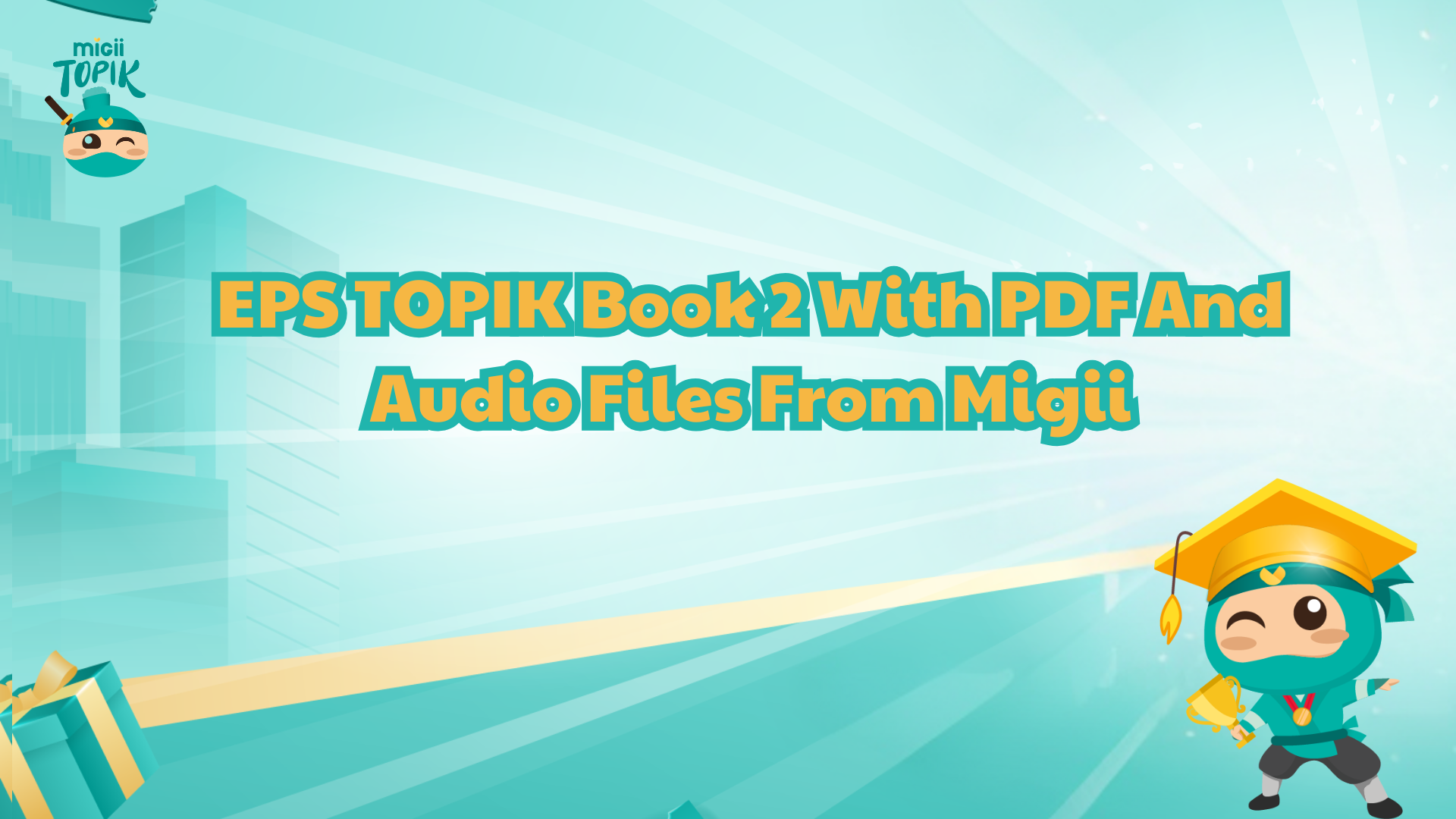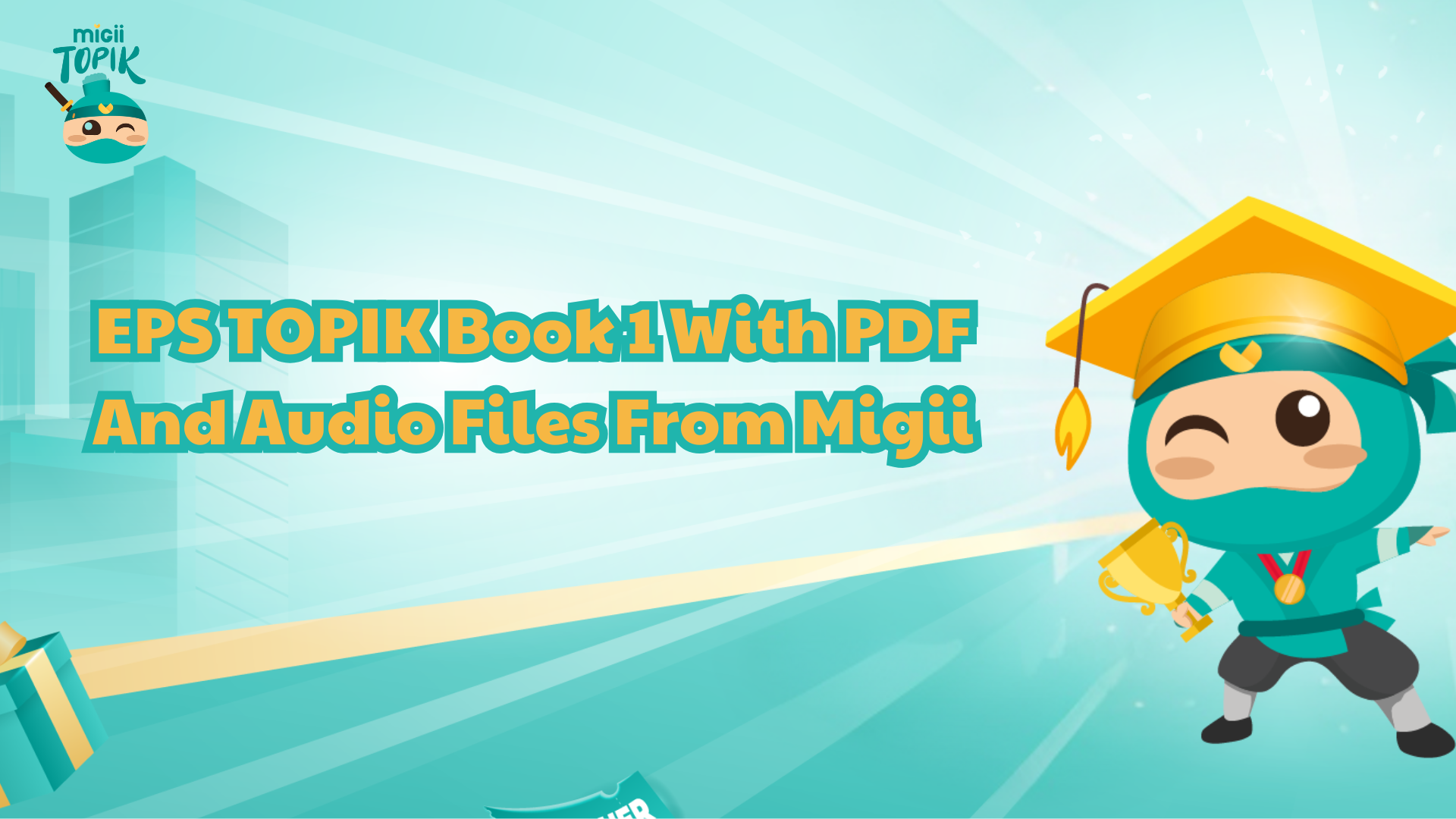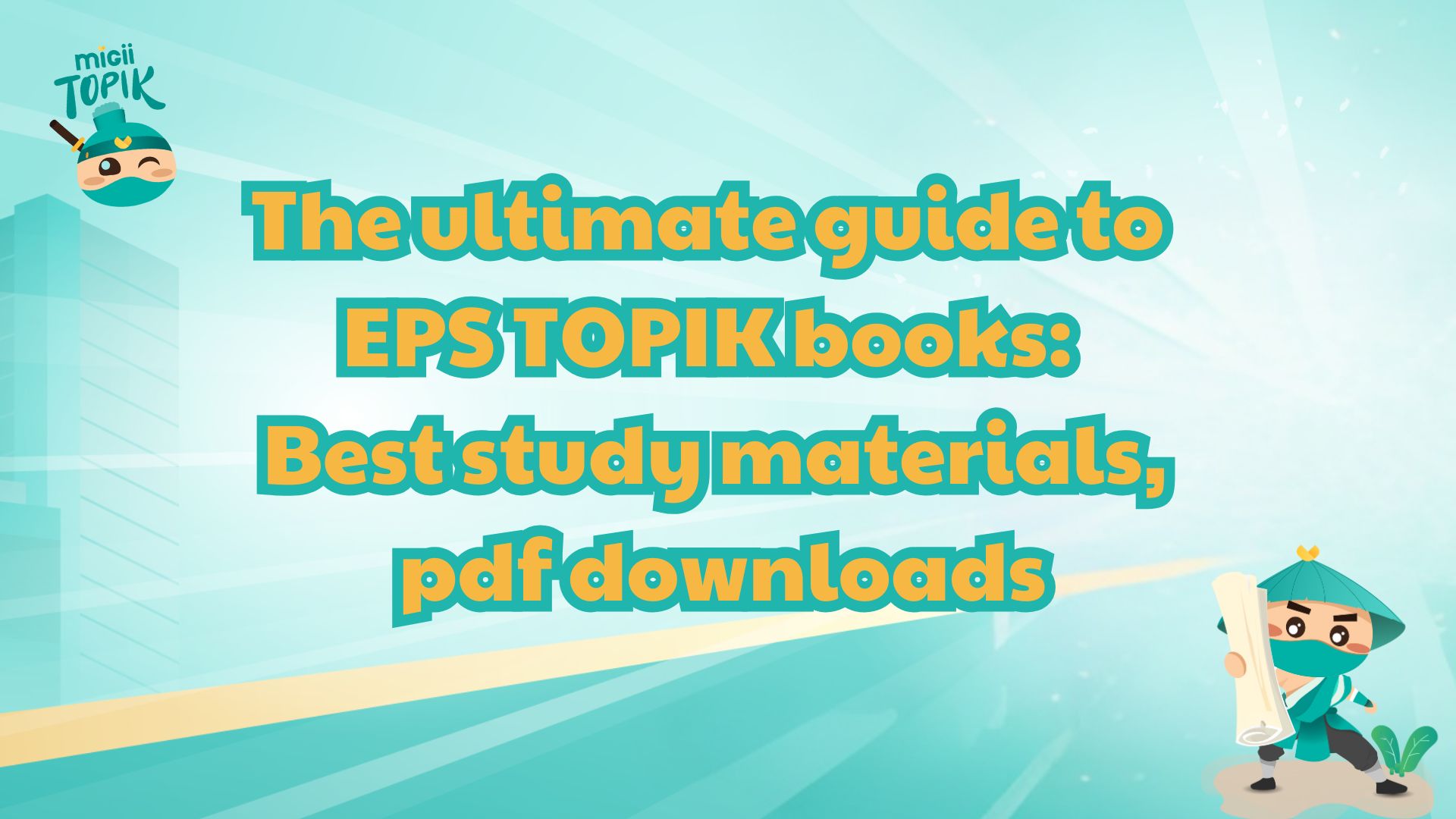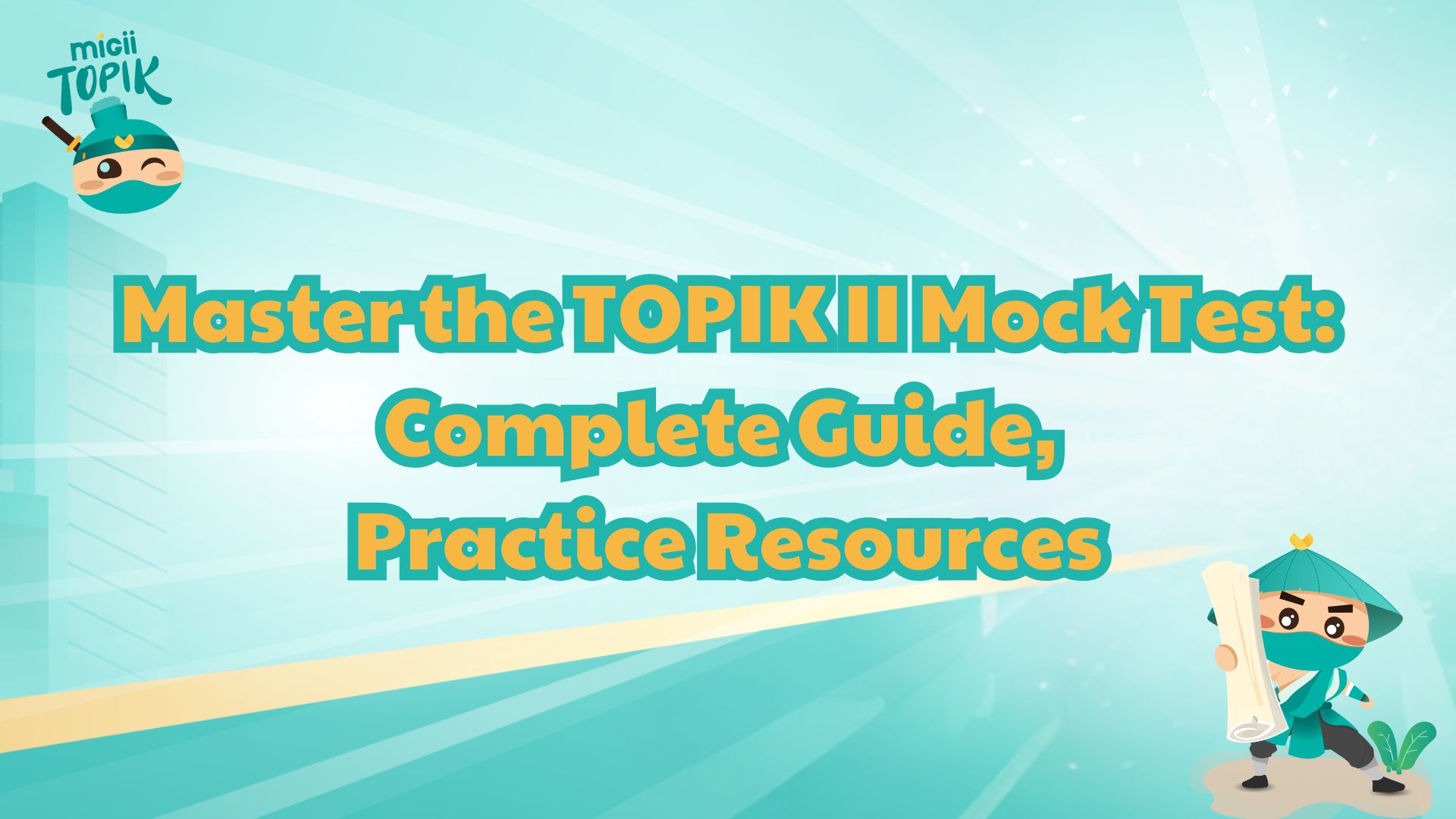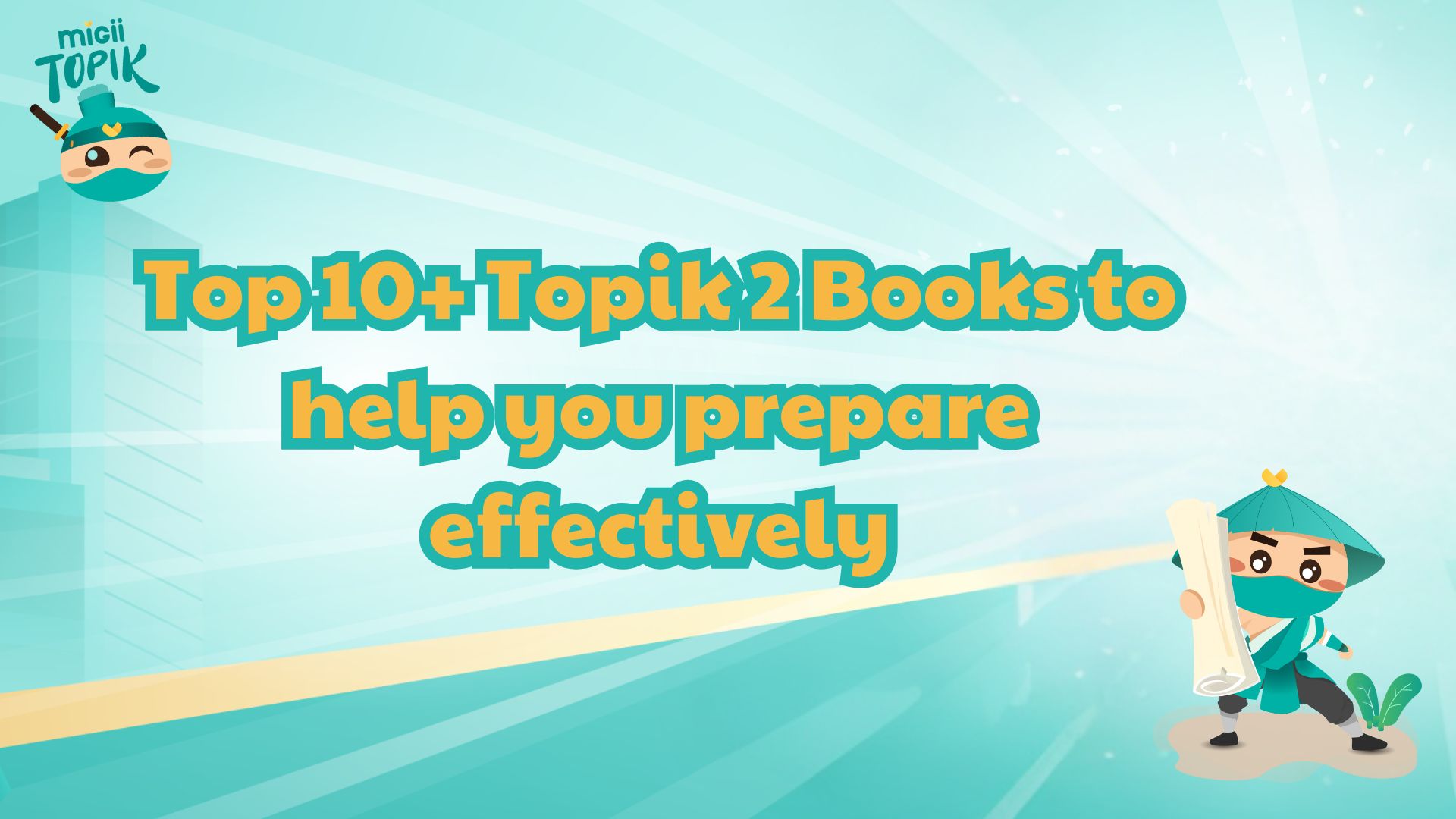The TOPIK 2 Answer Sheet is an essential tool for anyone preparing for the Korean proficiency exam. It not only serves as the official sheet used during the test but also helps learners practice at home by simulating real exam conditions. With the answer sheet, you can train yourself to mark answers correctly, avoid common mistakes, and manage your time more effectively. In addition, downloading the latest answer keys allows you to check your performance, calculate your score, and estimate your TOPIK level.
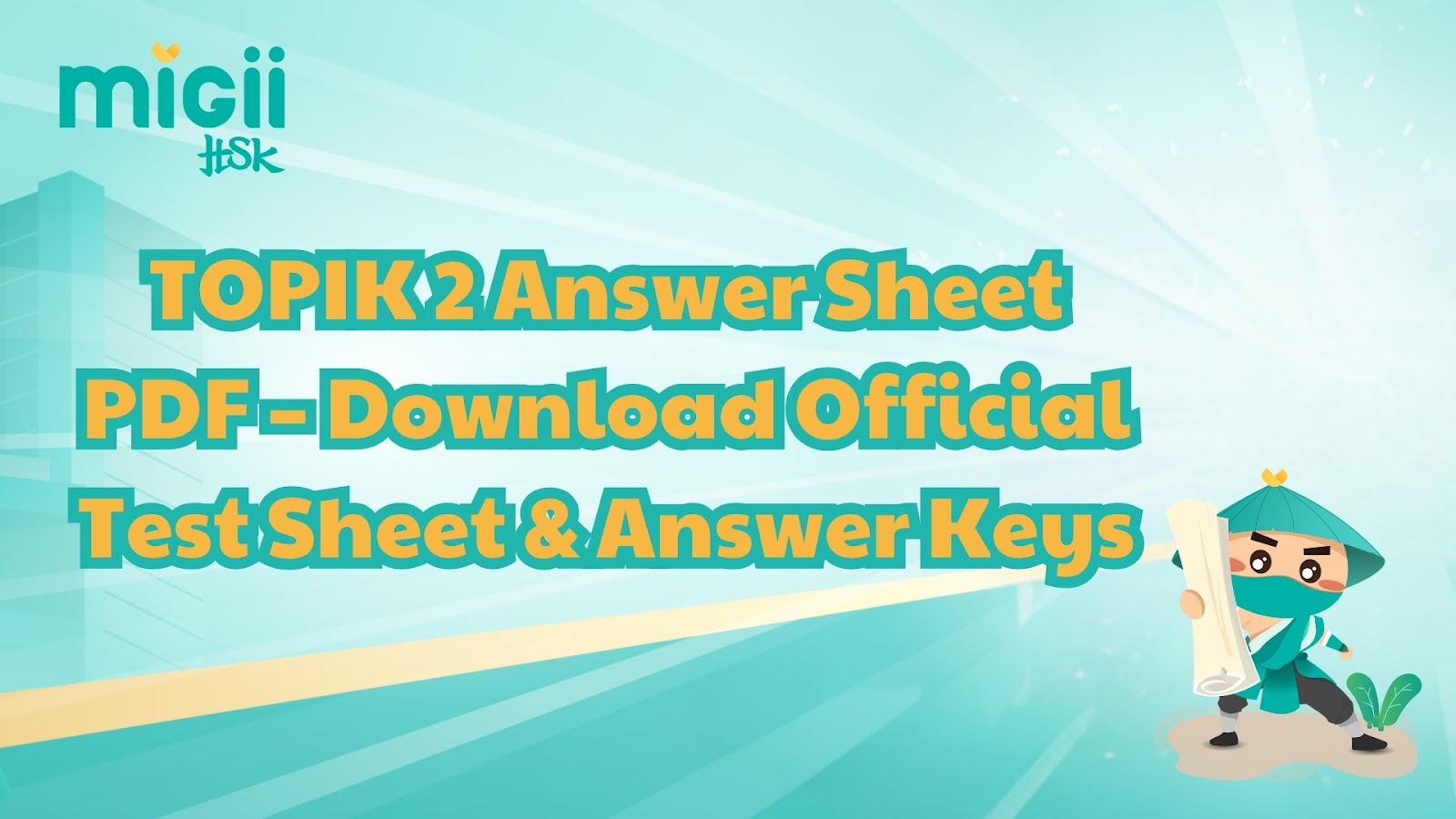
TOPIK 2 Answer Sheet
Introduction to TOPIK II and Topik 2 Answer Sheet
What is TOPIK II?
TOPIK II is the advanced level of the Test of Proficiency in Korean (Test of Proficiency in Korean), including levels 3, 4, 5 and 6, which evaluates intermediate to advanced Korean language ability. This test is organized by the Korean Institute for International Education and is for non-native Korean speakers who want to prove their language ability to study, work or live in Korea.
Test Structure
The TOPIK II exam consists of three sections: Listening, Reading, and Writing.
- Listening (70 minutes): Candidates listen to the audio and choose the correct answers.
- Reading (60 minutes): Candidates read passages and answer comprehension questions.
- Writing (50 minutes): Includes 2 short-answer questions and 2 essay questions on familiar or specialized topics, requiring candidates to express their opinions in Korean.
Purpose
- Proof of Korean proficiency: The TOPIK certificate is essential for those planning to study abroad, work, or settle in Korea.
- Level classification: Based on the exam results, candidates are ranked from Level 1 to 6, with TOPIK II covering intermediate (Levels 3–4) and advanced (Levels 5–6).
- Effective learning: Understanding the structure and requirements of the test helps candidates develop effective study strategies to achieve high scores.
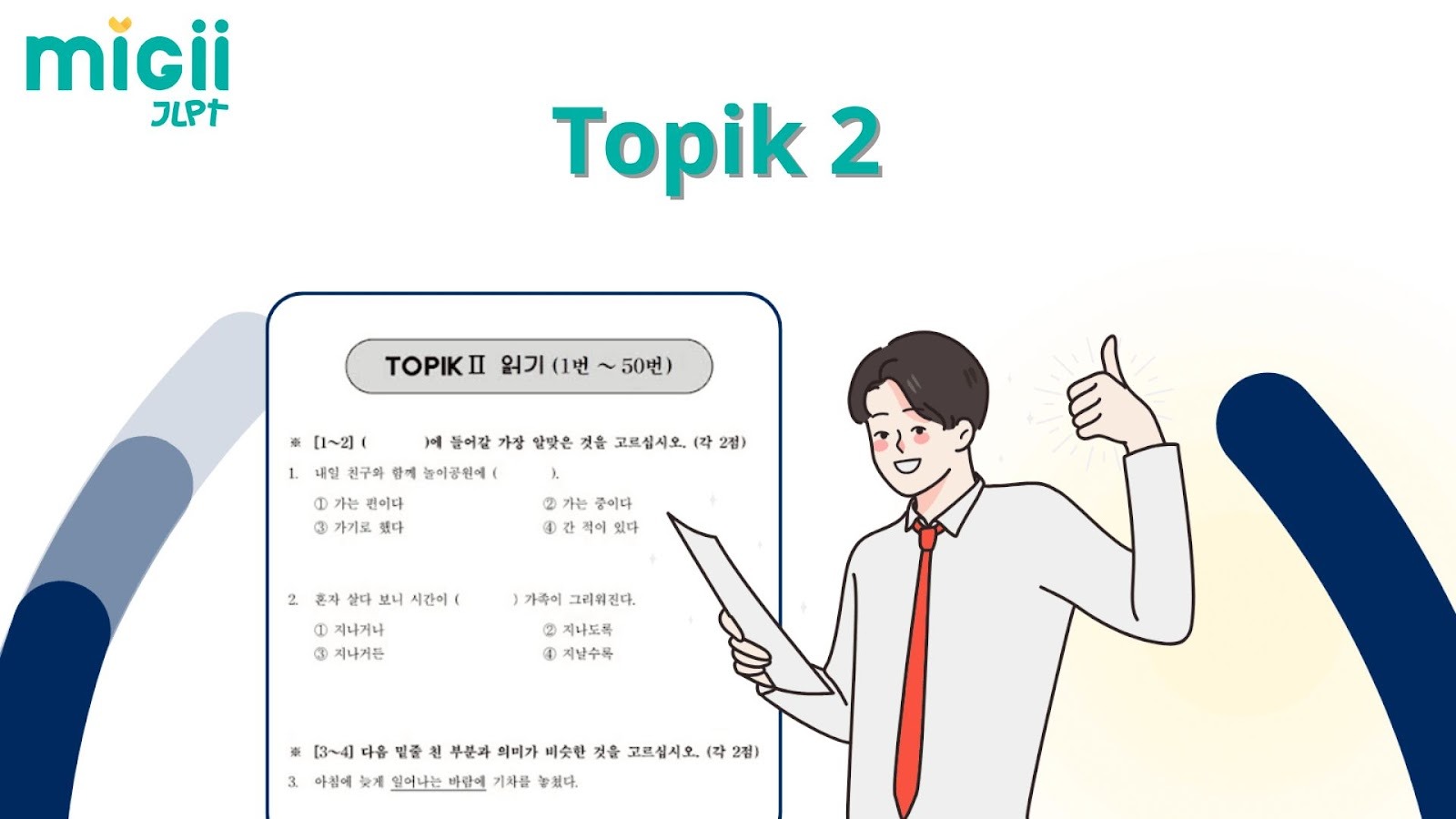
What is TOPIK 2? Exam structure
The role of TOPIK 2 answer sheet in TOPIK II exam.
The TOPIK 2 answer sheet plays a crucial role in the TOPIK II exam, as it is the official document where candidates record their answers. For the Listening and Reading sections, all responses must be marked on the answer sheet using a pencil, and the sheet is later scanned by an optical reader for scoring.
In addition to its function during the exam, the answer sheet also helps candidates in their preparation process. By practicing with the official answer sheet format, test-takers can familiarize themselves with the layout, learn how to shade the bubbles correctly, and avoid common mistakes such as marking outside the designated area. This practice is especially important because small errors in filling out the sheet can lead to lost points.
Distinguish: answer sheet (topik 2 answer sheet) and answer key (topik 2 answer key).
- Answer Sheet – TOPIK 2 Answer Sheet: This is the official form that candidates use during the TOPIK II exam to mark their answers. The sheet is scanned by an optical scoring system, so answers must be filled in correctly according to the rules (using a 2B pencil, no erasing, no writing outside the boxes). The answer sheet itself does not contain the answers; it only records the candidate’s responses.
- Answer Key – TOPIK 2 Answer Key: This is the official set of answers released after the exam, used for scoring and review. The answer key allows candidates to check their results, estimate their scores, and determine which TOPIK level (3–6) they achieved.
In short, the answer sheet is the tool for taking the exam, while the answer key is the resource for checking results.
TOPIK 2 Answer Sheet – Sample Answer Sheet
The TOPIK II answer sheet includes the candidate’s personal information at the top and designated spaces for marking answers or writing responses for each test section: Listening, Reading, and Writing. Candidates must accurately fill in the answer bubbles in the Listening and Reading sections (multiple-choice). For the Writing section, candidates are required to write their answers directly into the blank spaces provided, including two short-answer questions and two essay questions.
Listening (듣기) & Reading (읽기) Sections:
These are multiple-choice sections, so the answer sheet provides bubbles for candidates to mark their answers.
For each question, candidates fill in one option (A, B, C, D, or similar).
Answers must be shaded thoroughly and neatly so that the scoring system can recognize them correctly.
Writing (쓰기) Section:
The answer sheet provides large blank spaces for each writing task.
Candidates must write their answers in Korean directly into these spaces.
The Writing section consists of 4 questions: 2 short-answer questions and 2 essay-type questions.
Download Topik II Answer Sheet here:
How to calculate score from TOPIK II Answer Sheet
Scoring rules for Listening, Reading, Writing
The TOPIK II (Test of Proficiency in Korean, Level 2) is designed to assess intermediate-level Korean language skills in listening, reading, and writing. Understanding the scoring criteria for each section is essential for effective preparation. The following table summarizes the structure, scoring method, and grading principles of TOPIK II, providing a clear overview for candidates aiming to achieve a high score.
|
Skill |
Number of Questions |
Time |
Maximum Score |
Scoring Method |
Grading Principles |
|
Listening |
50 |
40 minutes |
100 |
2 points per correct answer |
Only correct answers are counted; no points are deducted for incorrect or blank answers |
|
Reading |
50 |
70 minutes |
100 |
2 points per correct answer |
Only correct answers are counted; nearly correct or partial answers are not accepted; blank answers = 0 |
|
Writing |
8 |
50 minutes |
100 |
Short questions: 5–10 points each Long questions: 15–25 points each |
Graded according to 3 criteria: 1. Content (answers the task appropriately) 2. Language (grammar, vocabulary, spelling) 3. Structure/Logic (coherence, use of connectors) |
How to calculate TOPIK score
TOPIK scores are calculated based on the number of correct answers in each test section. Each question carries a different point value depending on its difficulty. However, the organizers do not disclose the exact scoring formula. Instead, the scores are standardized to ensure fairness across different test sessions.
TOPIK I: The scores of the two sections, Reading (독해) and Listening (청해), are added together to get the total score. For example, if you receive 70 points in Reading and 80 points in Listening, the total score is 150, which corresponds to Level 2.
TOPIK II: The total score is the sum of the three sections. For example, 60 points in Reading, 70 points in Listening, and 50 points in Writing will give a total score of 180, which corresponds to Level 5.
TOPIK results are reported in the form of a score and the level achieved. You should check the specific requirements of your school or company to determine which level is appropriate.
How to calculate TOPIK score
Benefits of practicing with TOPIK 2 Answer Sheet
Practicing with the TOPIK 2 answer sheet offers many important benefits for learners preparing for the exam. By simulating real test conditions, candidates can get used to the pressure and the pacing of the actual exam, which helps reduce anxiety and improve performance. Moreover, it allows students to identify common mistakes and understand the proper way to fill in answers, which is crucial for achieving a high score.
- It helps candidates become familiar with the pressure of the real exam, allowing them to develop strategies to stay focused and calm under time constraints.
- It trains time management skills during the test, helping learners allocate the right amount of time to Listening, Reading, and Writing sections without feeling rushed.
- It reduces mistakes when filling in answers by providing practice in marking the correct bubbles or writing answers neatly, which minimizes the risk of losing points for careless errors.
- It improves accuracy when checking results, as repeated practice helps learners learn to review their work efficiently and identify inconsistencies before final submission.
Overall, using the answer sheet effectively prepares students for the actual TOPIK 2 exam and builds familiarity with the exam format. It also enhances confidence, ensures better time control, and increases the likelihood of achieving a higher score.
TOPIK II test preparation materials included
TOPIK II exam questions (PDF)
Practicing with past TOPIK II exams is an effective way to prepare for the test. You can access a comprehensive collection of official past papers, including answer sheets and listening audio files, through the following link:
Download TOPIK II exam questions
This resource provides a valuable opportunity to familiarize yourself with the exam format, practice time management, and identify areas for improvement. Utilizing these materials can enhance your readiness and confidence for the TOPIK II exam.
Experience in using TOPIK 2 Answer Sheet effectively
Habit of checking again before submitting
Developing the habit of reviewing your answers before submitting the test is extremely important. By carefully checking each section, candidates can catch simple mistakes such as misread questions, spelling errors, or incorrectly marked answers, which can cost valuable points. This habit also allows test-takers to ensure that they have answered all questions and that their responses are consistent and complete.
- It helps identify careless errors that might otherwise go unnoticed, such as selecting the wrong bubble on the answer sheet or skipping a question accidentally.
- It improves overall accuracy by giving students the chance to correct grammar, vocabulary, or calculation mistakes in Writing and Reading sections.
- It builds confidence, as knowing that the answers have been double-checked reduces anxiety and provides a sense of control during the exam.
Overall, making it a routine to review answers before submission increases the likelihood of achieving a higher score. It also encourages careful attention to detail, which is essential for success in exams like TOPIK II.
Practice like real test with stopwatch
Practicing like a real test using a stopwatch is a highly effective strategy for exam preparation. By timing each section, candidates can simulate the pressure and pacing of the actual TOPIK II exam, which helps them develop a realistic sense of how long to spend on Listening, Reading, and Writing tasks. This method also allows students to identify sections where they may be spending too much or too little time, so they can adjust their strategy accordingly.
- It helps improve time management skills, ensuring that each part of the test is completed within the allocated time.
- It creates a more realistic exam environment, reducing anxiety on the actual test day.
- It allows candidates to practice maintaining focus and concentration under strict time constraints.
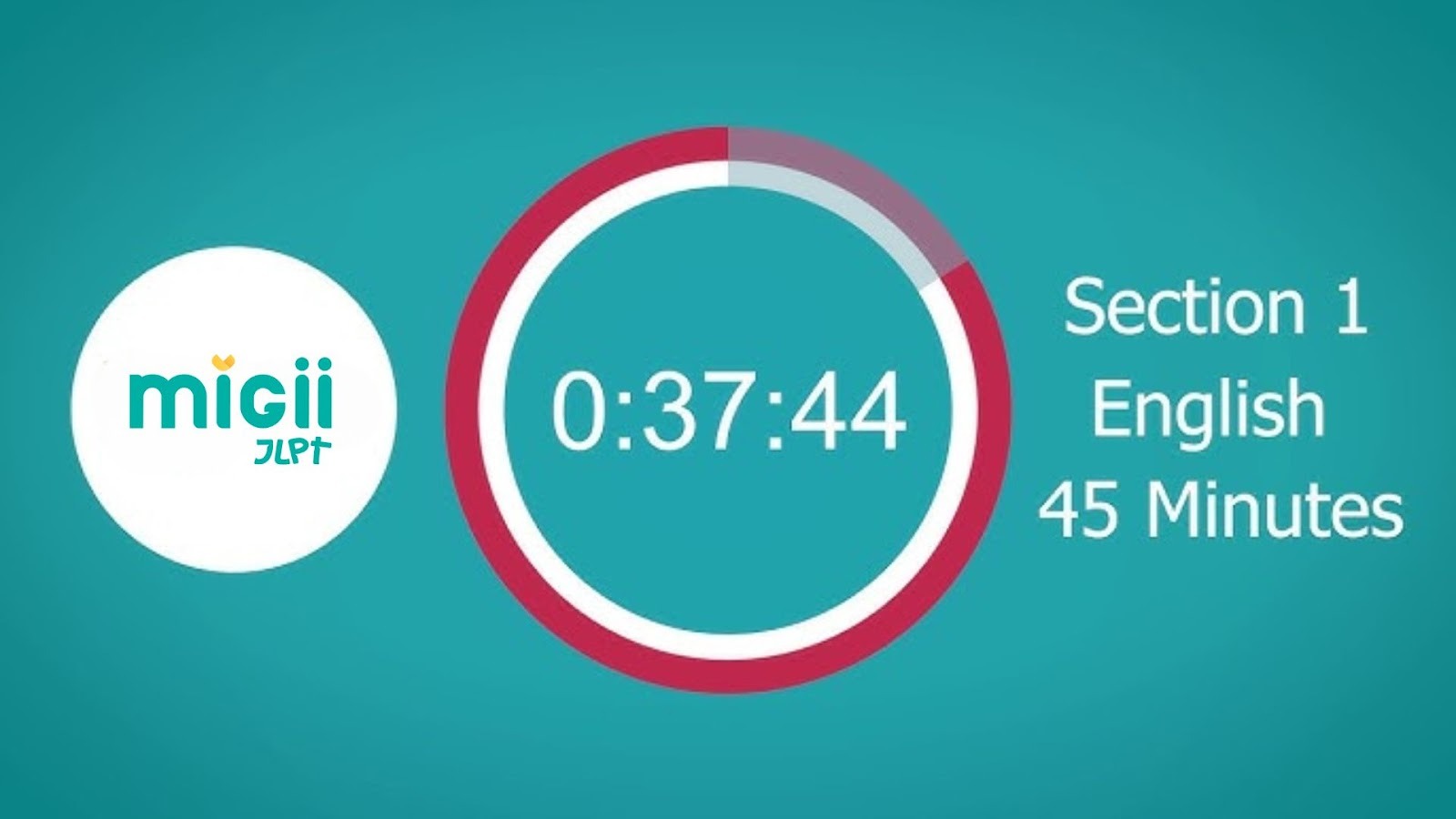
Practice like real test with stopwatch
Overall, using a stopwatch during practice sessions increases efficiency and confidence. It also helps students build a consistent pace, which is essential for performing well on the TOPIK II exam.
Combine doing test questions and coloring sheets to increase reflexes
Combining test practice with coloring or marking answer sheets is a useful technique to enhance reflexes and accuracy. By simultaneously answering questions and carefully filling in or coloring the bubbles on the answer sheet, candidates train their hand-eye coordination and develop a smoother, faster rhythm for completing the exam. This practice helps reduce careless mistakes, such as marking the wrong bubble or skipping a question, which can happen under time pressure.
- It improves speed and precision in transferring answers from the test paper to the answer sheet.
- It trains candidates to maintain focus while performing two tasks at once, simulating real test conditions.
- It enhances confidence, as students become familiar with the mechanics of completing the answer sheet quickly and accurately.
Overall, combining test questions with answer sheet practice develops both reflexes and accuracy. It also helps build a natural flow, making the actual exam process more efficient and less stressful.
In conclusion, preparing for the TOPIK exam requires consistent practice, effective time management, and familiarity with the test format. Developing habits such as reviewing answers, practicing with a stopwatch, and using answer sheets effectively can greatly improve performance and confidence. For anyone looking to study Korean and succeed in TOPIK, joining a structured program like Migii provides professional guidance, targeted practice materials, and expert tips to help learners achieve their language goals efficiently.
